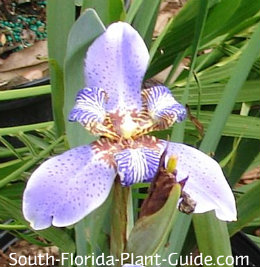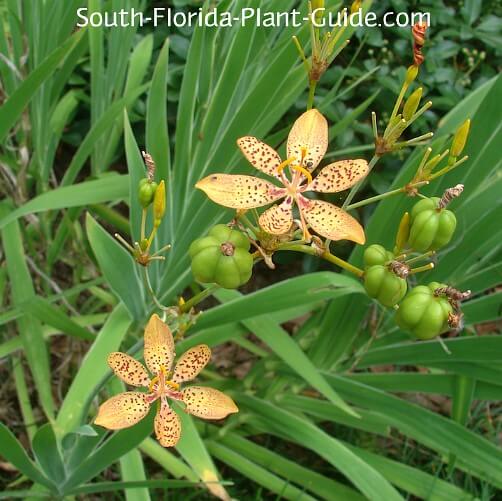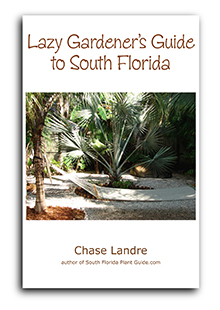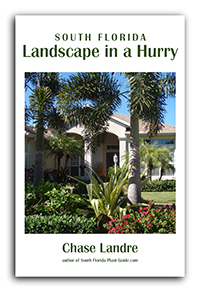Irises of South Florida
The beautiful irises of South Florida include African, walking, blue flag, and one called blackberry lily.

These striking plants make great accents for their foliage alone, but all have exquisite flowers as well.
The unique way that most plants of this type flower is to send up a shoot that looks just like a leaf.
Then a bud appears on the side near the top, opening into a delicate and colorful blossom.
The classic upright foliage fans out and complements other textures and plant growth patterns. Some have wider leaves, others are more narrow.

African Iris (Dietes vegeta) - also known as "Butterfly Iris" (pictured above) - is probably the best known in South Florida landscapes.
Its thin, willowy, upright leaves grow in a clump that forms a grass-like mound about 2-1/2 feet tall.
This plant blooms on and off all year with bright white flowers dabbed with lavender and gold. Another lesser-used variety has small, soft yellow flowers with a purplish-red center.
Walking Iris (Neomarica spp.) is so named because, as the flower stalk gradually leans low to the ground, it roots and "walks."
These plants come in flower colors of yellow, white and blue.

Especially beautiful is the lavender-blue and white blossom of the cultivar called Apostle Iris.
They bloom on and off during warm months, growing to about 3 feet tall. This plant is similar in looks to African Iris, but with wider leaves..
Blue Flag (I. virginica) blossoms in spring with gorgeous flowers in a vibrant lavender blue.
It's a native plant to Florida (and much of the Southeast U.S.).

Blue Flag grows about 2 to 3 feet tall, preferring part shade.
This is a good choice to plant by a pond since it will grow in very wet areas.

Blackberry Iris (Belamcanda chinensis/Iris domestica) - pictured above - is often called "Blackberry Lily" because of its flowers look more like lilies than irises.
This plant does best in part sun to part shade.
It sends flowers up on thin stems above the wide leaves, growing to about 2 feet tall with flowers reaching about 18 inches above.
When a stalk finishes flowering, it produces seed pods that open to
reveal little black "berries." Then it slowly turns brown. Cut off the
browned stalk all the way to the ground to tidy up the plant and let new
growth take over.
Blooms are a soft orange with reddish freckles, though a newer variety with brighter multi-colors has been recently introduced.
Plant specs
These plants will grow in full sun but seem happiest in part sun to part shade. Growth rate is moderate.
Heights vary by variety, averaging 2 to 3 feet tall.
Blue Flag and Blackberry Iris are cold hardy, growing anywhere in South Florida. The others prefer the warmth of Zone 10.
Though these plants will spread they don't do it in a hurry, so you can remove any shoots that are going places where you don't want them.
Though they like a good bit of moisture, it's best to place them in a well-drained area (the exception is Blue Flag, which can handle very wet soils).
Plant care
Add top soil or organic peat moss to the hole when you plant. Because this plant does best with plenty of water, you may want to add water-retention crystals when planting, especially if other plants nearby like it more dry. (For more info on this, see the page on Watering.)
Trimming is usually necessary to remove any browned leaves and spent flower stems. Cut these as close to the ground as you can.
Avoid a complete cutting back of the plant, however.
You can also deadhead if you like, especially with the walking variety to limit its spread.
Water is very important - they need a regular drink and don't mind "wet feet" occasionally.
Fertilize 3 times a year - in spring, summer, and fall - with a good quality granular fertilizer. You might like to supplement feedings with bone meal and/or liquid fertilizer for year-round bloomers like African and blackberry iris.
Plant spacing
Place these plants about 2-1/2 feet apart. Come out from the house 2 feet. When planting along a walk or drive, come in 3 feet to allow for future spread.
You can grow this plant in a container, though it'll really come into its own when planted in the ground.
Landscape uses for irises
- around a landscape boulder
- accent for a mixed bed
- along a porch or deck
- surrounding a palm
- front of the border (African and Blue Flag)
- lining a walk
- foundation plant
- around a tree trunk
- by the mailbox or lamppost
GOOD SNOWBIRD PLANT? YES
COMPANION PLANT SUGGESTIONS: In a part shade area, try downy jasmine, tibouchina grandifolia, firespike and pentas.
Other plants you might like: Heliconia, Butterfly Ginger
Take a break!
The ultimate guide to low-maintenance plants
and landscaping!
An ebook by
Chase Landre
author of
South-Florida-Plant-Guide.com
Learn more!
Get a greener thumb!
Want to learn more about South Florida planting, watering, fertilizing and dealing with weeds and pests?
See our Gardening How-To section for answers!
Get instant curb appeal!
An ebook by
Chase Landre
author of
South-Florida-Plant-Guide.com
Learn how to get instant curb appeal with fast growing plants and landscaping techniques!


